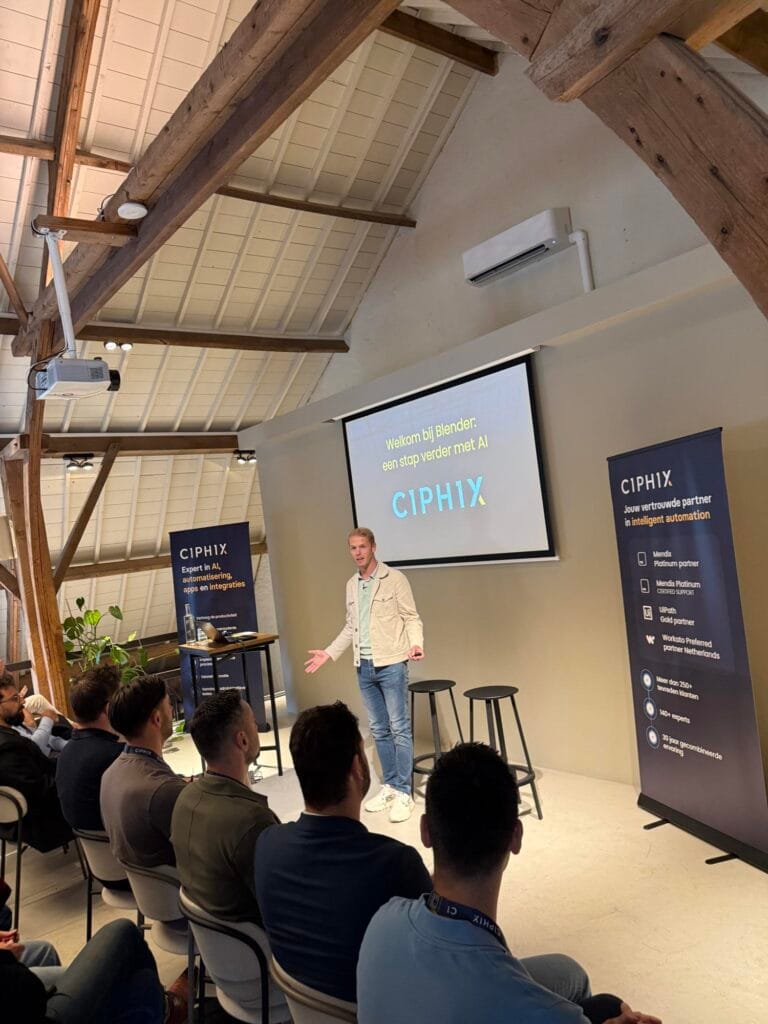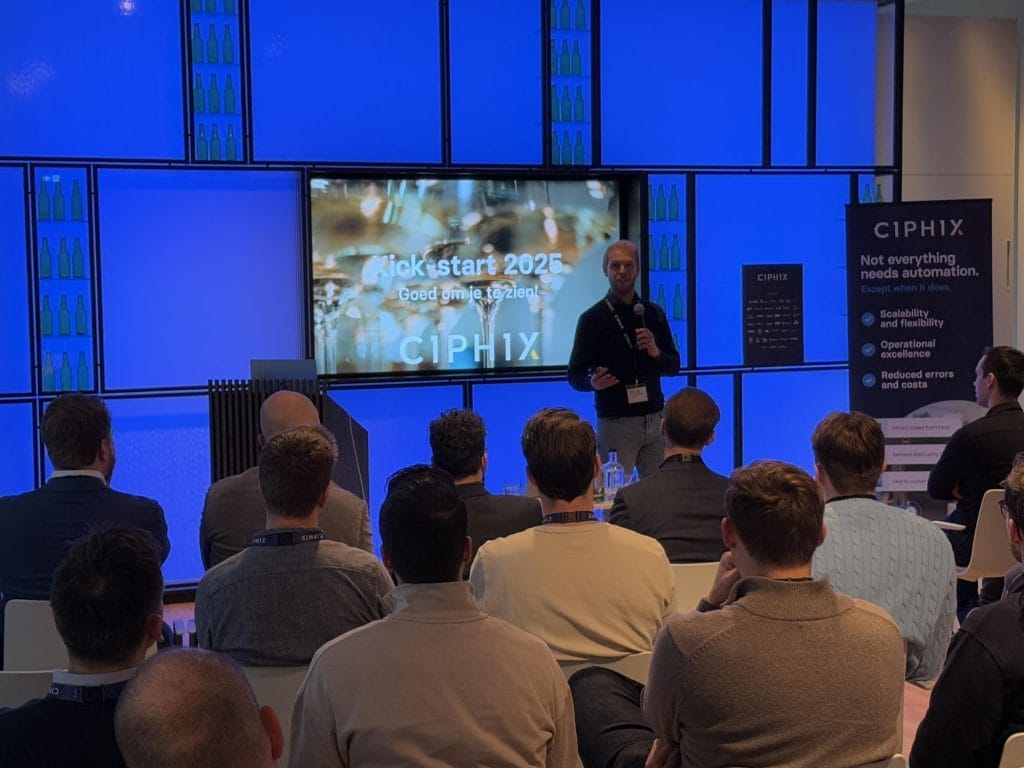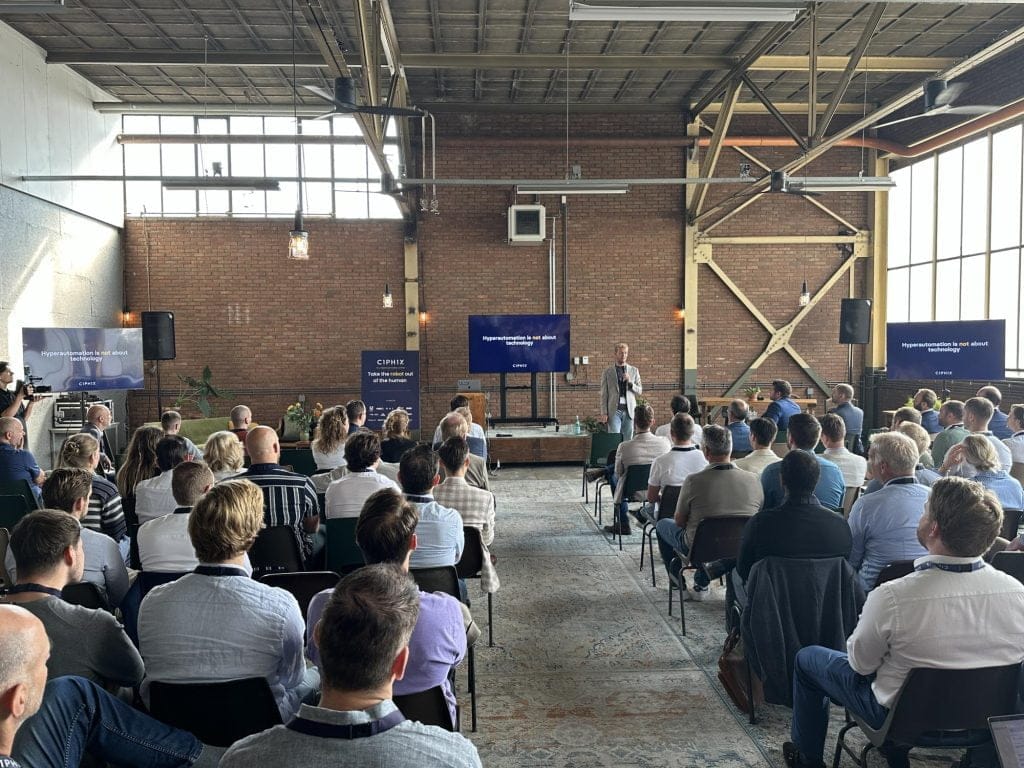Modeling processes & decisions
Daily be thousands decisions taken at every work environment, this large and small decisions its from large influence on the speed and agility of your organization. Many of this decisions its recurring and can be automatedatised. By process and approval structures in advance at define kunnen many tasks within those frameworks automatic and independent be performed by software. At Ciphix, we combine our knowledge of technology and complex business processes to help you, on your way to a faster and more efficient organization.
We will take you further!
Complex processes automate
Variables those a task complicated make can automatic be implemented and controlled to the hand of predetermined rules.
Lower costs
Save time on performing and restore of complex and error-prone tasks.
Preserve of speed
Avoid repetitive work and save valuable time.
Avola Decision
With Avola Decision, Ciphix’s Business Rule platform, decisions can be mapped, structured and optimized. Avola Decision ensures that business rules can function independently of your application landscape, and that modifications and additions can be made quickly and easily. This allows the business to focus on capturing the rules and guidelines of the decision models, while IT gets to work implementing those models in the appropriate software.
Modeling processes and decisions ensures that rules and guidelines are followed, decisions are made quickly and precisely, and that decisions and the basis can always be retraced.
Optimal control over daily decisions
Avola Decision is the Business Rule Platform from Ciphix. With Avola business rules In a user-friendly way, business rules can berpen, implemented, maintained and verified. Thanks to flexible API links, Avola Decision integrates seamlessly into the application landscape of your organization.
Be more agile
Apply expertise within your company to areas where it is really needed.
Separate business from IT
Keep the logic in your business separate from your systems.
Optimal insight
Maintain control and see where and when rules are implementedimplemented.
Frequently asked questions:
How do you build the right application for a client?
Always start with clearly identifying the customer problem. It is common for applications to be developed without first fully understanding what problem an application is supposed to solve. To avoid this pitfall, we always start with a Design Thinking session to create a “shared understanding. This approach provides a structured way to deeply analyze what the core problem is, for whom it provides what value, and how best to approach building or improving applications.
What can you do about an outdated interface in a portal or application?
At such times, dwell once again on what is really important to the end user. By once again asking what the end user really wants when optimizing an obsolete interface, the focus shifts to the user’s needs and expectations, which is essential for improving the end-user experience. In doing so, look not only at revamping visual elements, but also at optimizing outdated processes. It is the ideal opportunity to adjust not only the form, but also the function of the application to build an optimized interface that perfectly meets the needs of the end user.
How do I ensure that customers experience the same app/tech convenience as with private apps?
With customers wanting to experience the same convenience with business apps as with private apps, the first question is always what exactly customers mean by “convenience” and “usability. Since these are subjective concepts that are perceived differently by everyone, it is essential to first understand your customer’s specific needs and preferences as well as possible. By carefully asking about customers’ personal experience of ease of use, we can best anticipate a customer’s expectations and requirements and ultimately build applications where customers experience similar convenience to private apps.
How does replacing legacy software benefit a company?
You can answer this question from different perspectives. If you look at cost and efficiency, you reduce costs, improve the user experience for customers and staff, and reduce your risks, particularly in the area of security. You can also look at this question from your company’s future perspective. A legacy migration gives you a digitally compliant business. If good ideas come from the business, you can estimate what it will cost, what it will deliver and how you can implement it. Ultimately, that’s something every business should be able to do.
What business processes can be automated?
There are several business processes at almost every company that can be automated. The most common processes that are automated are the invoicing process, inventory management and data entry. Software then, for example, ensures that invoices are prepared and sent automatically and that payments are tracked. As a result, fewer errors are made and employees spend less time on administration.
Our work
What people say about us
What else we can help you with
Artificial Intelligence
Robotic Process Automation
Process Intelligence
Low-Code Apps
Integration iPaaS
Business Rule Management
The right solution
How do I start with AI?
Replacing systems and apps
Integrating systems
Automating processes
Digitising processes
Digital customer experience
Service Design
Product Design
Application Development
DevOps
Manufacturing
Services
Healthcare
Maritime Manufacturing Industry
Avola Decision – Business Rule Engine
Audit Trail for Mendix
Chat for Mendix
DevTools for Mendix
Search for Mendix
Ultimate Calendar
Ultimate Gantt
Ultimate Scheduler
Creating mobile app(s)
Creating portals
Setting up your own Low-Code team
A (new) Mendix partner
Municipalities
Challenge us
Replace legacy software that’s getting in the way of your digital transformation, digitize complex business processes or need help with a complicated integration? We’ll help you out.























